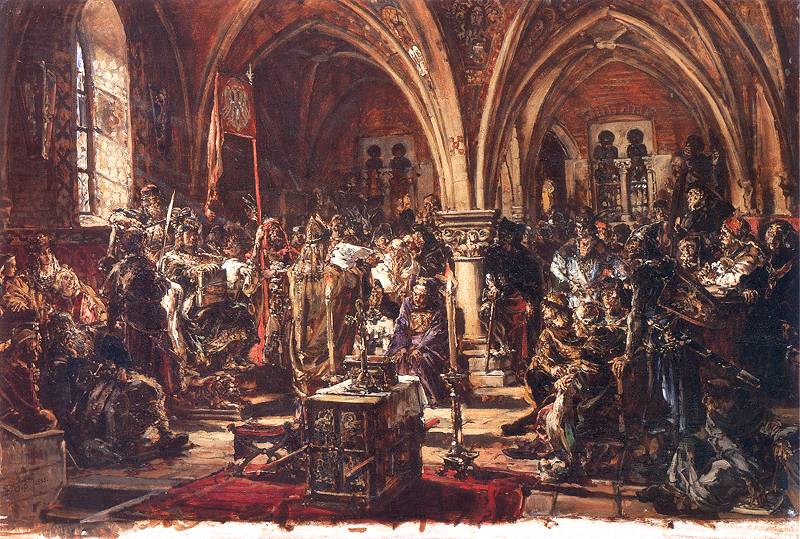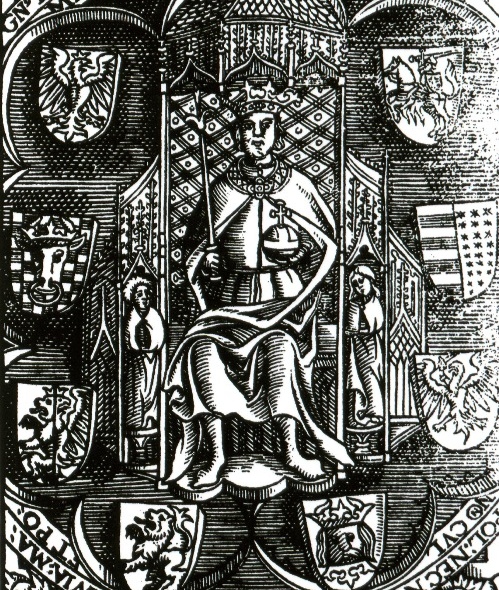|
Rawa Voivodeship
Rawa Voivodeship () was a unit of administrative division and local government in the Kingdom of Poland since 15th century until the partitions of Poland in 1795. It was part of the Greater Poland Province. Together with the Plock and Masovian Voivodeships it formed the former Duchy of Masovia. The voivodeship had its capital in the town of Rawa Mazowiecka, and its origins date back to the second half of the 15th century. In 1462, after the deaths of local Piast dynasty dukes, Mazovian lands of Rawa and Gostynin were incorporated into the Crown of the Kingdom of Poland. In 1476, the Land of Sochaczew returned to Poland as well. Borders of Rawa Voivodeship remained unchanged for more than 300 years, until the second partition of Poland in 1793, when it was annexed by the Kingdom of Prussia. Rawa Voivodeship had four senators in the Senate of the Polish–Lithuanian Commonwealth. These were the Voivode of Rawa, the Castellan of Rawa, and the castellans of Sochaczew and Gostynin. ... [...More Info...] [...Related Items...] OR: [Wikipedia] [Google] [Baidu] |
Polish–Lithuanian Commonwealth
The Polish–Lithuanian Commonwealth, also referred to as Poland–Lithuania or the First Polish Republic (), was a federation, federative real union between the Crown of the Kingdom of Poland, Kingdom of Poland and the Grand Duchy of Lithuania, existing from 1569 to 1795. This state was among the largest, most populated countries of 16th- to 18th-century Europe. At its peak in the early 17th century, the Commonwealth spanned approximately and supported a multi-ethnic population of around 12 million as of 1618. The official languages of the Commonwealth were Polish language, Polish and Latin Language, Latin, with Catholic Church, Catholicism as the state religion. The Union of Lublin established the Commonwealth as a single entity on 1 July 1569. The two nations had previously been in a personal union since the Union of Krewo, Krewo Agreement of 1385 (Polish–Lithuanian union) and the subsequent marriage of Queen Jadwiga of Poland to Grand Duke Jogaila of Lithuania, who was cr ... [...More Info...] [...Related Items...] OR: [Wikipedia] [Google] [Baidu] |
Senate
A senate is a deliberative assembly, often the upper house or chamber of a bicameral legislature. The name comes from the ancient Roman Senate (Latin: ''Senatus''), so-called as an assembly of the senior (Latin: ''senex'' meaning "the elder" or "old man") and therefore considered wiser and more experienced members of the society or ruling class. However the Roman Senate was not the ancestor or predecessor of modern parliamentarism in any sense, because the Roman senate was not a de jure legislative body. Many countries have an assembly named a ''senate'', composed of ''senators'' who may be elected, appointed, have inherited the title, or gained membership by other methods, depending on the country. Modern senates typically serve to provide a chamber of "sober second thought" to consider legislation passed by a lower house, whose members are usually elected. Most senates have asymmetrical duties and powers compared with their respective lower house meaning they have sp ... [...More Info...] [...Related Items...] OR: [Wikipedia] [Google] [Baidu] |
Mszczonów
Mszczonów is a town in Żyrardów County, Masovian Voivodeship, Poland, with 6,231 inhabitants as of the 2006 census. It is situated just outside the Warsaw metropolitan area, approximately from Warsaw city centre. History The oldest known mention of Mszczonów comes from a document of Duke Konrad I of Masovia from 1245, when it was part of fragmented Piast-ruled Poland. Mszczonów was granted town rights in 1377 or earlier. It was a royal town of Poland, administratively located in the Rawa Voivodeship in the Greater Poland Province. One of two main routes connecting Warsaw and Dresden ran through the town in the 18th century and Kings Augustus II the Strong and Augustus III of Poland often traveled that route. The town possessed a vibrant Jewish community, and it was once the center of the Hasidic Amshinov dynasty (Mszczonów being pronounced as "Amshinov" in Yiddish.) According to the 1921 census, the town had a population of 5,014, of which 80.1% declared Polish natio ... [...More Info...] [...Related Items...] OR: [Wikipedia] [Google] [Baidu] |
Biała Rawska
Biała Rawska is a town in Rawa County, Łódź Voivodeship, Poland, with 3,081 inhabitants as of December 2021. History Biala Rawska is one of the oldest settlements of historic Mazovia. In the 12th century, it probably was an administrative center and the seat of a castellan, but first written document which confirms the existence of Bela, as it was called, comes from 1246. The gord of Bela was protected by a wooden rampart, as it did not have a defensive wall. The castellany of Bela was in the 14th century transferred to Rawa Mazowiecka. It is not known when Biala Rawska received town charter, but it happened before 1498. At that time, the town was property of Bishops of Chelm, and was an important administrative center, seat of Biala County of Rawa Voivodeship. Located along busy merchant trails to Mazovian Czersk, Leczyca and Sandomierz, Biala prospered. Good times ended in the 1650s, during the disastrous Swedish invasion of Poland, after which the population of Bial ... [...More Info...] [...Related Items...] OR: [Wikipedia] [Google] [Baidu] |
Wojewoda
Voivode ( ), also spelled voivod, voievod or voevod and also known as vaivode ( ), voivoda, vojvoda, vaivada or wojewoda, is a title denoting a military leader or warlord in Central, Southeastern and Eastern Europe in use since the Early Middle Ages. It primarily referred to the medieval rulers of the Romanian-inhabited states and of governors and military commanders of Poles, Hungarian, Lithuanian, Balkan, Russian people and other Slavic-speaking populations. In the Polish-Lithuanian Commonwealth, ''voivode'' was interchangeably used with ''palatine''. In the Tsardom of Russia, a voivode was a military governor. Among the Danube principalities, ''voivode'' was considered a princely title. Etymology The term ''voivode'' comes from two roots. , means "war, fight," while , means "leading", thus in Old Slavic together meaning "war leader" or "warlord". The Latin translation is for the principal commander of a military force, serving as a deputy for the monarch. In ear ... [...More Info...] [...Related Items...] OR: [Wikipedia] [Google] [Baidu] |
Sejm
The Sejm (), officially known as the Sejm of the Republic of Poland (), is the lower house of the bicameralism, bicameral parliament of Poland. The Sejm has been the highest governing body of the Third Polish Republic since the Polish People's Republic, transition of government in 1989. Along with the upper house of parliament, the Senate of Poland, Senate, it forms the national legislature in Poland known as Parliament of Poland#National Assembly, National Assembly (). The Sejm comprises 460 Member of parliament, deputies (singular or ) elected every four years by Universal suffrage, universal ballot. The Sejm is presided over by a Speaker of parliament, speaker, the "Marshal of the Sejm" (). In the Kingdom of Poland (1385–1569), Kingdom of Poland, the term ''Sejm'' referred to an entire two-Chambers of parliament, chamber parliament, comprising the Chamber of Deputies (), the Senate and the King. It was thus a three-estate parliament. The 1573 Henrician Articles strengthe ... [...More Info...] [...Related Items...] OR: [Wikipedia] [Google] [Baidu] |
Gąbin
Gąbin is a small town in Płock County, Masovian Voivodeship, Poland, with 4,065 inhabitants as of December 2021. The Warsaw radio mast, which stood near Gąbin, was the tallest structure in the world until its collapse in 1991. It remained the highest structure ever created till 2010. History Gąbin was first mentioned in 1215, but a Gord (archaeology), gord-type settlement existed here long before that date, as in 1920, a coin minted by first Polish King Boleslaus I the Brave was found in the market square. Gąbin probably received town charter in 1322, or perhaps earlier; in 1437 the charter was confirmed and expanded. Until the mid-15th century, it was part of the Duchy of Mazovia, and in 1462, it became seat of the Gostynin Land, in what was then Rawa Voivodeship. It was a Royal city in Poland, royal town of the Polish Crown. In the period known as Polish Golden Age, Gąbin was renowned for its cloth makers, it also was the seat of a starosta. Local merchants traded with the ... [...More Info...] [...Related Items...] OR: [Wikipedia] [Google] [Baidu] |
Sejmik
A sejmik (, diminutive of ''sejm'', occasionally translated as a ''dietine''; ) was one of various local parliaments in the history of Poland and history of Lithuania. The first sejmiks were regional assemblies in the Kingdom of Poland (before 1572), though they gained significantly more influence in the later era of the Polish–Lithuanian Commonwealth (18th century). Sejmiks arose around the late 14th and early 15th centuries and existed until the end of the Commonwealth in 1795, following the partitions of the Commonwealth. In a limited form, some sejmiks existed in partitioned Poland (1795–1918), and later in the Second Polish Republic (1918–1939). In modern Poland, since 1999, the term has revived with the ''voivodeship sejmiks'' (''sejmiki województwa''), referring to the elected councils of each of the 16 voivodeships. The competencies of sejmiks varied over time, and there were also geographical differences. Often, numerous different types of sejmiks coexisted in ... [...More Info...] [...Related Items...] OR: [Wikipedia] [Google] [Baidu] |
Kazimierz Jagiellonczyk
Casimir IV (Casimir Andrew Jagiellon; ; Lithuanian: ; 30 November 1427 – 7 June 1492) was Grand Duke of Lithuania from 1440 and King of Poland from 1447 until his death in 1492. He was one of the most active Polish-Lithuanian rulers; under him, Poland defeated the Teutonic Knights in the Thirteen Years' War and recovered Pomerania. The Jagiellonian dynasty became one of the leading royal houses in Europe. The great triumph of his reign was bringing Prussia under Polish rule. The rule of Casimir corresponded to the age of "new monarchies" in western Europe. By the 15th century, Poland had narrowed the distance separating it from Western Europe and became a significant power in international relations. The demand for raw materials and semi-finished goods stimulated trade, producing a positive balance, and contributed to the growth of crafts and mining in the entire country. He was a recipient of the English Order of the Garter (KG), the highest order of chivalry and the most ... [...More Info...] [...Related Items...] OR: [Wikipedia] [Google] [Baidu] |
Duchy Of Mazovia
The Duchy of Masovia was a District duchy, district principality and a fiefdom of the Kingdom of Poland (1025–1385), Kingdom of Poland, existing during the Middle Ages. The state was centered in Mazovia in the northeastern Kingdom of Poland, and during its existence, its capital was located in the Płock, Czersk, Masovian Voivodeship, Czersk and Warsaw. It was formed in 1138 from the territories of the Kingdom of Poland, following its Fragmentation of Poland, fragmentation, that was started by the testament of Bolesław III Wrymouth. The country existed in the years: 1138–1275, 1294–1310, 1370–1381, and 1495–1526, between that time, going through fragmentations of its territory into smaller duchies and its unification. The states formed during its fragmentation were duchies of Duchy of Kuyavia, Kuyavia, Duchy of Dobrzyń, Dobrzyń, Duchy of Czersk, Czersk, Duchy of Płock, Płock, Duchy of Warsaw (district principality), Warsaw, Duchy of Rawa, Rawa and Duchy of Belz, Bel ... [...More Info...] [...Related Items...] OR: [Wikipedia] [Google] [Baidu] |
Zygmunt Gloger
Zygmunt Gloger (3November 184516August 1910) was a Polish historian, archaeologist, geographer and ethnographer, bearer of the Wilczekosy coat of arms. Gloger founded the precursor of modern and widely popular Polish Tourist and Sightseeing Society ( PTTK).Zygmunt Gloger - Starożytnik z Jeżewa. Internet Archive. Life He was a son of engineer and Michalina née Wojno. Under the professional influence of historians and geographers Julian Bartoszewicz as well as Józef Ignacy Krasicki, and later |






